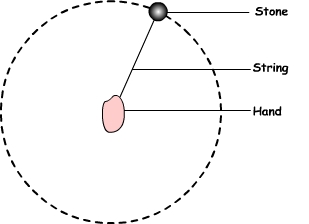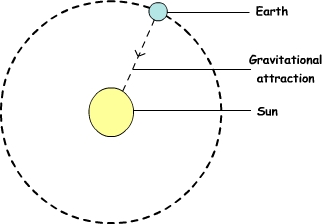
Mechanics
Learning physics
and chemistry
easily and freely - Science for elementary school, middle school and
high school
Free online mechanics lesson for elementary school, middle school and high school.
Gravity
Effects of gravity
1) Gravitational interaction between Earth and a human sized object
When we cease to hold an object, a familiar phenomenon happens: it drops.
This fall is caused by the Earth's attraction because of the gravitational interaction that exist between all objects with mass.
Gravity is responsible for falling all objects.
The gravity makes objects fall toward the ground but for more accuracy we can say they are attracted to the center of Earth.
" Interaction " means there are two actions: from Earth upon the object and also from the object upon Earth. So we could ask " Why Earth doesn't move whereas general properties of interactions tell that the two actions have an identical strenght ? ". The answer is quite simple: The gravity has different effects upon Earth and upon the object because they have different masses. The bigger a mass is, the less the object moves. Some actions of identical strenght have more effects on a light object than on a heavy one: The Earth is really far more massive than a human sized object therefore an action upon it have no observable effect.
2) Gravitational interaction between two human sized objects
All objects around us ( table, pencil, chair etc ) have a mass and therefore exert between them gravitationnal interactions but our daily experience tells us they don't attract each other like two magnets could do it.
The gravity still exist for these objects but their mass is so weak that gravity has also some very weak effects, so weak that they are not observable.
The effects of gravity between objects at the human scale can therefore be neglected.
3) Gravitational interaction between Earth and Sun
The circular motion of Earth around the Sun is one of gravity effects.
Why gravity doesn't make Earth fall upon the Sun ?
The Earth can be compared to a stone that is tied to a string that someone makes revolve.
The hand holding the string attracts this one, and the string attracts the stone: from this attraction combined to a suitable initial speed results a circular motion.


The Earth is like the stone, gravity like the string and the Sun like the hand: The Earth have a circular motion around the Sun because of its initial speed and because of the Sun gravitational action.
The other circular motions in the solar system and beyond can be explained the same way

|
|
©2021 Physics and chemistry


